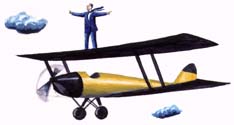Senior executives on the fast track used to be groomed through an internal development process that gave them a deep understanding of the existing business and culture. With fundamental changes in the business environment, the executive development path increasingly leads into new territory far beyond the current experience of the corporation. As the requirements for successful business leadership have changed, so have the approaches to developing senior business leaders.
“The global marketplace is complex,” says Jane Hiller Farran, senior director of corporate programs in Wharton Executive Education, who has helped develop programs for thousands of high-level executives at corporations around the world. “The pace of change is dramatic. Companies can’t always internally marshal the type of development experience they want to offer.”
A New View of Leadership
The qualities sought in today’s leaders are very different from those needed in the past. Where the emphasis was once on strengthening traditional management disciplines such as finance, accounting, marketing and strategy, the focus today is much more on the personal qualities that are just as critical to organizational success in an age of rapid change.
New Demands of Leadership
Among the distinctive qualities companies are seeking in modern leaders are:
- risk-taking
- courage
- ability to make teams work
- cross-cultural awareness
- creative thinking
- tolerance for ambiguity
- understanding organizational and system dynamics
- flexibility
Top executives often fail to see that, in this environment, unconventional employees can be strong potential leaders even if they don’t fit the traditional corporate mold. For example, one senior executive had been branded as an oddball and renegade in the firm. “The company couldn’t figure out what to do with him,” Farran says. “But when the CEO came in for part of the executive program, he realized that this individual would be ideal to manage some of the rapidly changing businesses that require a whole new perspective on the business.”
In addition to honing business skills in finance, marketing, technology, mergers and acquisitions, operations management, supply chains and other areas, executive development programs need to go deeper. They need to examine leadership through three lenses: individual, team and organizational dynamics. Leaders need a deep understanding of their individual strengths and weaknesses. They also need to understand how best to design and work in teams and other groups. Finally, they need a systemic perspective to understand the dynamics of the entire organization.
Deeply ingrained attitudes toward authority, for example, have a tremendous impact on how executives behave as leaders and subordinates. One group came up with great ideas in an executive program, “but they turned to Jello when they had to press their case with top executives of the firm,” Farran said.
Development programs also can foster interdisciplinary perspectives – from outside experts and across divisions in the firm. In the course of one program, executives at one firm realized that a very large deal, which was almost lost, could be salvaged through the relationships across divisions established during the program. “It’s magic what happens when you get these really bright, capable people together in the same room,” Farran said. “They recognize competencies, resources and individuals in the company they didn’t know existed.”
High-Velocity Education
What education is needed to prepare top executives for the new demands of leadership? Among the approaches used in programs for senior executives are:
- Experiential learning: The most significant lessons for high-level executives are not from book knowledge but from experience. “They are so used to being successful that they rely heavily on their own experience,” Farran said. ” Faculty cannot preach to executives. If you want to teach someone more tolerance for risk-taking, you can’t design a program where faculty have all the answers. You need to model what you are trying to accomplish in the program.”
- Real-Time, Real-World Links: Development programs should be focused on addressing real-time issues in the organization. Executives also need opportunities to bring the learning back to the broader organization.
- An On-Going Process: Executive development is not a discrete event but an on-going process. There should be interim meetings and follow-up after a year or 18 months to discuss progress and address new challenges.
- Personal Challenge: Change results from challenge, and programs need to shake up the participants. One way this is done is by having outside executives present a view of dramatic changes in the industry followed by presentations by the company’s senior executives on the firm’s current strategies. A gap analysis usually reveals serious challenges and key levers for the future.



